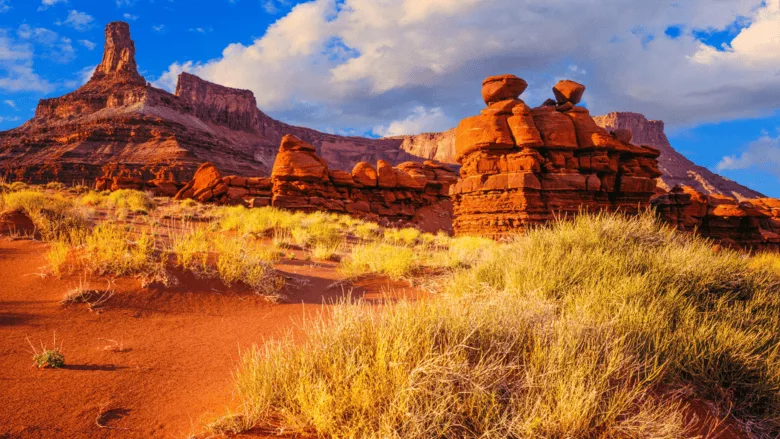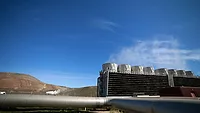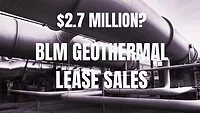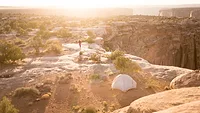Congress Weighs Faster Geothermal Energy Development on Federal Lands
Several recommendations for increasing geothermal facilities presented to lawmakers

Image via Ron and Patty Thomas from Getty Images Signature
Advances in geothermal-energy technology has fostered expectations that geothermal facilities will supply the U.S. with 90 gigawatts (GW) of electricity by 2050 (one GW is equal to one billion watts), which has prompted a congressional committee to seek recommendations from geothermal experts on what is needed to accelerate development of geothermal energy on federal lands.
The House Subcommittee on Energy and Mineral Resources heard from those experts at a field hearing held May 12, 2025 in Cedar City, Utah. The hearing was held to identify what the barriers are to developing geothermal energy on federal land; ways to overcome those barriers; and the potential for developing technologies—such as enhanced geothermal systems (EGS)—to meet the growing U.S. energy demand.
The experts’ recommendations ranged from the need to speed up the permitting process—which witnesses said can take years to get a permit approved—to easing restrictions on the construction of transmission-line infrastructure on federal land so the electricity produced on those lands can be delivered to where it is needed.
Subcommittee Chairman Pete Stauber (R-Minn.) said the Bureau of Land Management (BLM), oversees geothermal development on federal lands, and, in 1978, geothermal energy was the first type of renewable energy the BLM approved for production on federal lands.
“However, as we've seen from other forms of energy operating on public lands, the permitting process for geothermal is mirrored by duplicative requirements and lengthy regulatory delays,” said Stauber, who added, Federal geothermal projects must complete up to six stages of review throughout the development process required by the National Environmental Policy Act (NEPA). Such reviews “can take up to 10 years and does not include endless cycles of frivolous litigation,” said Stauber, who praised current efforts by lawmakers to reduce the permitting process for geothermal on federal lands.
Such efforts include H.R. 301—the Geothermal Energy Opportunity Act, also known as the GEO Act—which was introduced by Rep. Celeste Maloy (R-Utah). The GEO Act seeks to expedite processing of geothermal-project lease applications by setting a 60-day deadline for the Department of the Interior to process such applications.
“Geothermal delivers steady 24/7 base load power. It doesn't depend on weather or falling supply chains. It's a homegrown resource sitting right under our feet at a time when our electric grid is under stress and global energy markets are incredibly unstable,” Maloy said.
However, “despite its incredible potential, geothermal faces regulatory delays, permitting hurdles, and a lack of investment that doesn’t match the scale of the opportunity,” said Maloy, who added the U.S. needs “a system that works for innovators, not against them,” and the hearing was “an opportunity to identify real, actual steps Congress could take to unleash geothermal development, from permitting reform to interagency coordination.”
Advances in technology such as directional drilling; fiber optic sensing; and hydraulic fracturing techniques from the oil and gas sector have “unlocked geothermal energy in places where it was previously impossible,” said Tim Latimer, chief executive officer at Fervo Energy who testified before the subcommittee.
In October 2023, Fervo Energy’s “Project Red” in Nevada, an EGS pilot project, began generating electricity, thereby validating EGS as a true technological breakthrough, Latimer said. Project Red “set new records for an individual enhanced geothermal wells flow and power output, and it laid the foundation for what we’re now building at the Cape Station geothermal development project in Beaver County, Utah, he said.
Cape Station is being produced in stages with Fervo Energy having already drilled more than half the wells needed for phase one, as well as partnering with Mitsubishi Heavy Industries to start construction of three on site power plants, according to Latimer, who added, “This isn’t a concept or a pilot. Cape Station is a full scale energy project” with plans for the facility to begin delivering 500 megawatts of “around-the-clock, clean power to the grid” during 2026, Latimer said.
“The shale revolution was made possible through decades of public private partnership. Let’s apply that same model to next generation of geothermal, especially tackling drilling risk, which remains a key barrier to national deployment,” Latimer said.
However, “innovation alone is not enough to unlock geothermal flow potential,” Latimer said. With “90 percent of geothermal resources lying beneath federally managed land,” what is needed is “smart federal policy” and “federal investment in geothermal research and development.”
To further increase the amount of land on which geothermal energy can be accessed requires the BLM to increase the amount of land that is made available for the BLM’s annual geothermal lease sale, testified Jake Garfield, deputy director of Utah’s Office of Energy Development (Utah OED)
Since 2020, the BLM has made a little over 160,000 acres of land in Utah available for geothermal lease sale, but during the same period the BLM made more than 700,000 acres of land in Nevada available for lease sale, said Garfield, who added the amount of Nevada land available for lease sale was “over 4.4 times the amount of land that went up for lease sale in Utah.”
“This discrepancy between Utah and Nevada is even more stark when you consider that the Nevada BLM hasn’t even held their 2025 lease sale yet,” Garfield said. “The demand for parcels of land to potentially develop geothermal energy far exceeds the supply currently being offered by the BLM, and that's a change we would really like to see,” he said.
The Utah OED’s second recommendation is for the BLM to conduct broad-scale programmatic planning for geothermal development in the western U.S., Garfield said. The BLM conducted this type of programmatic planning in 2008 during which the bureau examined land where geothermal development can happen, according to Garfield, but such planning can use updated data to determine “where geothermal energy really is feasible and where it should happen, where it should be prioritized, potentially over other land uses.”
The Utah’s OED’s third recommendation is for the federal government to make extensive “progress with permitting of transmission” of electricity produced by geothermal energy, Garfield said. “Unlike oil or coal, you cannot transport the source of the fuel to your generation site. We need transmission lines to go to the source of the energy,” he said.
The current permitting process to get transmission lines complete “simply takes far too long,” said Garfield, who provided the example of “the initial construction of a long transmission line from renewable energy sites from Wyoming down to Southern Nevada” that has “taken 16 years to permit, and construction still won't be done for another five years.” If there are “delays like that with transmission, we’ll never see the full build out of Utah’s geothermal potential,” he said.
The Utah’s OED’s final recommendation is “to see progress with NEPA permitting,” specifically, a shorter timeline for geothermal development, Garfield said.
This project represents a new frontier in geothermal: hot rock power generation—not the traditional geothermal used for heating and cooling. It's critical to distinguish this from residential or shallow geothermal systems. Hot rock power generation taps deep subsurface heat to produce utility-scale electricity, and the success of projects like Cape Station proves that this is a high-potential, scalable solution to the nation’s energy needs. Accepting and accelerating this kind of development is essential for achieving a clean, reliable energy future.
Click here to view the hearing.
Looking for a reprint of this article?
From high-res PDFs to custom plaques, order your copy today!






